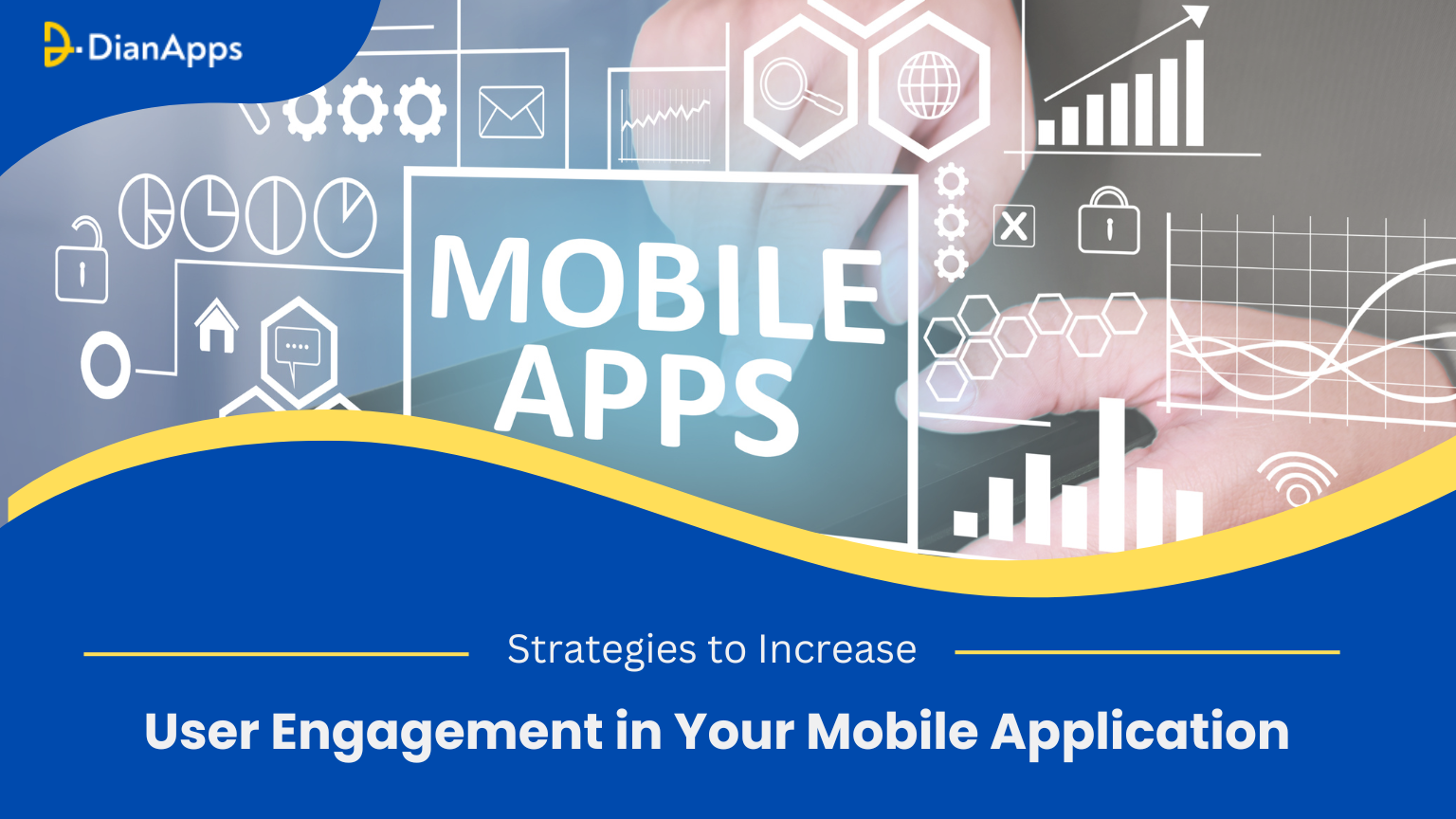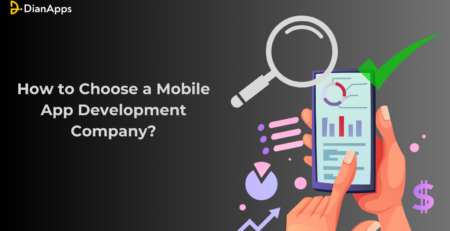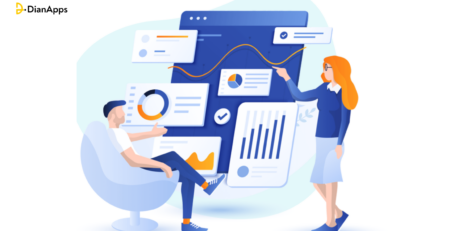How to Increase User Engagement in Your Mobile Application?
Did you know that on average, individuals have 80 apps on their smartphones but only utilize 30 each month?
To make your app stand out, it’s necessary to prioritize user engagement. After all, the more engaged users are, the longer they stay connected!
However, enhancing app engagement calls for a big-picture approach, considering every action a user takes. This is where mobile app engagement strategies prove invaluable. From incorporating gamification to implementing personalized messaging, these techniques ensure your app is attractive, encouraging users to return consistently.
In this article, you’ll learn about the strategies for increasing user engagement and crafting a user engagement plan that aligns with your metrics and goals.
What is App Engagement?
Simply put, app engagement refers to the extent of user interaction with an app. According to Statista, the collective user expenditure on Google Play and the App Store is projected to reach approximately $233 billion by 2026. Therefore, concentrating on enhancing app engagement not only attracts loyal customers but also contributes to the profitability of your business.
Failure to meet customer expectations and engage them through your app may lead to high churn rates or increased uninstallations. Hence, it is crucial to implement effective app engagement strategies.
Now that you understand what app engagement entails, let’s explore how adopting optimal strategies can elevate your app engagement levels.
What does user engagement mean for your mobile app?
In reality, user engagement encompasses every aspect of interaction. Every click, view, and interaction a user makes constitutes user engagement. The more users engage, the more value they derive from your app. Essentially, higher levels of user engagement signify a successful app, as engaged users contribute to increased app profitability.
- Research indicates that 8 out of 10 people are willing to pay extra for a more engaging experience.
- Engaged users are 63% less likely to churn
- The top 10% of engaged app users spend three times more.
- Additionally, 82% of engaged users are inclined to promote your app.
Why do you need user engagement strategy for your mobile app?
Engagement with an app is significant as it gauges the extent of user interaction and the frequency of app usage. High engagement levels signify that users perceive the app as valuable and enjoyable, increasing the likelihood of sustained usage. This, in turn, leads to better retention rate, higher customer satisfaction, and ultimately, improved business outcomes. Engaged users are also more inclined to recommend the app to others, fostering mobile app growth and expanding the user base. Therefore, monitoring and enhancing app engagement are vital for the success of any mobile application.
It is only through this process that you can collect essential data to support experiments aimed at improving user engagement:
- Does the user return to the app frequently, and how often?
- What is the duration of time users spend on your platform?
- Are they making use of the entire app or just specific features?
- Which features are the most popular?
How to Increase User Engagement in Your App?
Make your app’s vision, mission, and story clear
When launching an app, it’s essential to have a clear purpose in mind. Understanding what you aim to achieve with your app and its origin is crucial. While you may be well-informed about this, your users might not fully grasp the intent behind the app. To enhance engagement, articulating your app’s vision, history, and mission statement can be beneficial.
Users are more likely to be loyal to companies that resonate with them. According to a survey, 82% of consumers prefer brands with values aligning with theirs, and this holds true for apps as well. On various platforms, including your app, website, and others, communicate your app’s unique purpose. Share the story of what inspired the app’s development and discuss your aspirations for it. This approach will reveal the genuine value of your app, fostering a stronger connection with users.
Make and keep the signup process shorter
Lengthy signup processes are frustrating. Therefore, it’s essential to ensure a quick and easy app signup with minimal registration steps. Additionally, considering options such as signup via social media platforms, emails, or phone numbers can enhance user convenience.
For instance, Instagram offers signup through your Facebook ID and password, enabling users to register within seconds.
Use CTA on landing pages to guide users
On the mobile landing pages within your app, use compelling calls to action (CTAs) that effectively guide users through their journeys.
Make sure CTAs stand out prominently from the surrounding content and present a specific request, encouraging users to tap on them. When users have a clear understanding of what each CTA button entails, they are more likely to take action and continue engaging with the app.
To further encourage user interaction with CTAs, provide a transparent incentive, such as a specific reward, ensuring users understand the value they’ll receive by following through.
Personalize the user onboarding process
Creating a positive first impression is crucial, especially when envisioning long-term relationships with customers. Personalizing the welcome page for app users can significantly contribute to this goal. Simplifying the app interface, providing options for users to choose their interests, and offering incentives can streamline the mobile app development process.
Demonstrating the importance of registered users fosters a higher likelihood of engaging customers for lasting relationships.
Pro tip: When describing your company, avoid emulating the styles of larger corporations like Microsoft or Apple. Avoid using a generic “us” approach. Instead, highlight the real individuals behind your app and share the authentic story with your users.
Experiment with Gamification
Enhancing user engagement becomes more enjoyable through gamification. Users appreciate when elements in an app feel like a game, even if the app itself isn’t explicitly a gaming platform. Regardless of your app’s nature, leveraging gamification can be advantageous. For such an innovative add-on in your app, consult with gaming app development experts!
Various gamification strategies can be implemented to transform the in-app experience into an enticing game. Introducing challenges adds a competitive edge to your app, while a points system enables users to accumulate rewards through sustained engagement. A simple progress bar allows users to track their journey, motivating them to stay involved.
Use push notifications for updates and other information
Push notifications are an effective means to enhance user engagement with your app. They serve as a channel for various types of information, enticing users to frequent your app more regularly.
For instance, utilize push notifications to update users about new features or general enhancements to your app. Personalize these notifications with product recommendations and other pertinent messages, drawing from order history and past interactions within the app. In eCommerce app development services, push notifications can also re-engage users by highlighting special offers or reminding them of abandoned carts.
However, it’s crucial to strike a balance and avoid overwhelming users with excessive push notifications. Send only those that hold potential importance for users. Furthermore, leverage personalization to boost engagement, as customized push notifications can enhance reaction rates by up to 400%.
Offer loyalty systems rewards
Motivate your users by offering them goals to strive for! Implementing a tiered loyalty system conveys that increased engagement leads to enhanced benefits. It’s essential to acknowledge that loyal customers anticipate being acknowledged and rewarded.
Take, for instance, the e-scooter operator Voi, which has introduced a loyalty program named Voialty. Through this program, customers ascend through different levels, such as Rookie to Pro, based on their ride frequency. Consequently, users at higher levels enjoy more substantial discounts on their rides!
Use competitions to get the user’s attention
Competition serves as a framework for tasks, providing users with purpose. This aspect holds particular significance for tracking apps, where the essence of their functionality involves numerous repetitive tasks. Research indicates that introducing a competitive element enhances user motivation to complete tasks.
Any application can adopt this approach. Currently, the shared mobility app Forest — formerly ‘HumanForest’ is recognizing users who contribute the most to saving CO2 by utilizing their e-bikes. Through awarding prizes to top performers, HumanForest not only encourages user engagement but also achieves a reduction of 20 tonnes of carbon emissions in just one week.
Custom avatars for personal experience and fun
To convey a story, try launching custom avatars. In essence, avatars contribute to a more personalized experience, fostering a heightened sense of ownership for the user.
Yet, the potential extends beyond a mere profile picture.
Consider the fintech app Nestlings as an example! This app employs vibrant animal avatars to personify your financial personality. By creatively visualizing animals ‘squirreling away a nest egg,’ as Nestlings aptly describes it, they not only personalize the experience but also enrich the story of saving money.
Let users skip tutorials
For some users, app navigation is already familiar, and they may not require interactive walkthrough guides. However, acknowledging that others might want insights into how your app functions, consider incorporating interactive walkthrough guides. Additionally, provide options to skip these tutorials to streamline the onboarding process.
Pro Tip: Pay attention to your users’ concerns and actively address them. If their issues are valid, leverage your app to solve those problems. Develop the app with your users in mind, not just for personal preferences. Allow users to contribute to the improvement of your app, fostering a deeper level of engagement.
Over To You
You’ve taken the step to learn how to enhance user engagement with your mobile app, and we’ve shared a comprehensive guide for you! It begins with recognizing the role of intuitive design and then leveraging personalization techniques – these are what bring users back. We’ve discussed push notifications, gamification strategies, and social media integration – tools at your disposal to keep them engaged.
The importance of regular updates? They are crucial in maintaining customer satisfaction and interest. User feedback is powerful too; always appreciate its impact for continuous improvement. Achieving high user engagement isn’t a task but a marathon.
So stay patient, test new features wisely with the assistance of a mobile app development company, and always aim to offer more value with every update.




